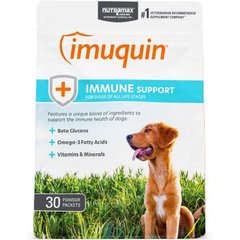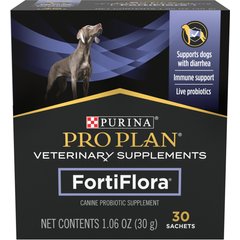Dog Tumor Removal
Any tissue in dogs, both internal and external, can grow a tumor. Since lumps and bumps can be many things, malignant (cancerous) or benign (noncancerous), understanding their origin is critical to putting together the best care plan for your dog’s health.
Does Your Dog’s Tumor Require Surgery?
In all cases, your vet will examine the area. Often, your vet will suggest taking a sample from your dog’s tumor with a needle. This provides cells that can be viewed under a microscope and may give hints to the tumor’s origin.
A biopsy will definitively diagnose the cause of a tumor. This sample of the growth (or in many cases, the entire growth) is sent to a lab for a pathologist to review. The pathologist can trace the origin of the tumor and provide a confirmed diagnosis.
This information will help your vet determine the next best steps for your dog. In some cases, this will be a “watch and wait” approach. In other cases, follow-up with a veterinary oncologist or board-certified surgeon may be needed.
Vet Recommended Health Support
- Nutramax Imuquin Immune Support Powder Immune Supplement for Dogs, 30 count$24.99Chewy Price
- Purina Pro Plan Veterinary Diets FortiFlora Powder Probiotic Digestive Supplement for Dogs, 30 count$30.99Chewy Price
- Purina Pro Plan Adult Sensitive Skin & Stomach Salmon & Rice Formula Dry Dog Food, 16-lb bag$54.48Chewy Price
- Virbac Epi-Otic Advanced Ear Cleaner for Dogs & Cats, 4-fl oz bottle$12.34Chewy Price
What’s the Cost of Surgery to Remove a Dog’s Tumor?
You may be thinking that it costs more to remove a cancerous tumor versus a noncancerous tumor, but the tumor type doesn't dictate the cost of surgery.
It's more dependent on the tumor’s size, location, anatomical makeup (is it highly vascular?) and other patient-related factors (types of medications and monitoring that your dog needs during anesthesia).
More aggressive-type cancerous tumors usually require a more invasive surgery with removal of more tissue, and they require more surgical skill. Most clinics bill for surgeries based on:
-
Surgeon expertise (if a boarded surgeon is needed to perform the procedure)
-
Surgical time (if extra steps are needed, surgery time will be longer and will cost more; surgery time is usually a per-minute charge at many veterinary hospitals)
-
Anesthesia drugs and monitoring (blood pressure, oxygen levels, technician time, etc.)
-
Medications to take home (antibiotics, pain meds, and others depending on the specifics of the patient)
-
E-collar and bandages, if needed
-
Biopsy costs (histopathology to the lab)
-
Some places will include recheck appointments or follow-up visits in the cost
Dog Tumor Removal Recovery
Post-surgery care for your dog’s tumor will depend on where it was located and the extent of the surgical procedure required to remove it.
If your dog shows any of the following symptoms after surgery, check in with your vet right away. These can be signs of a surgical complication:
-
Discharge or swelling at the surgical site
-
Opening or drainage of the incision
-
Distension (swelling) of the belly
-
Sluggishness
-
Changes in breathing rate
-
Pale gums
Aftercare for Internal Tumors
If your dog’s surgery was to remove an internal tumor, then you will need to make sure they rest for at least 10-14 days after the surgery to allow for healing. You will also need to:
-
Monitor the incision for signs of infection, such as pain, redness, or discharge
-
Keep an E-collar on your dog at all times to prevent licking or grooming the incision
-
Give medications as directed, usually to manage pain but sometimes to treat infection
-
Monitor your dog’s appetite and bathroom habits
Appetite is mainly affected by anesthesia, drugs, and pain. If pain is well controlled, most dogs should be interested in food the evening they go home. If your dog is still groggy from anesthesia, they may not want to eat until the next morning.
Dogs should pee within a few hours of surgery. Pooping may take 12-24 hours, since dogs are usually fasted the night before surgery, and it takes some time for the stimulus to poop to kick in. Eating and taking short leash walks can help stimulate the bowels.
If your dog has no interest in food and cannot go to the bathroom, call your vet.
Aftercare for External Tumors
You will need to ensure that your dog rests for 10-14 days after surgery. If the tumor was removed from an external surface on your dog, like their skin, you will also need to monitor the surgical site. Depending on how much tissue was removed and from what area, fluid can accumulate under the skin, causing a sagging appearance or even leakage through the incision.
If you see these signs, which can indicate an infection or something called a seroma, check in with your vet right away. Your dog may require further monitoring and care. You should also call your vet if you see the following signs:
-
Swelling
-
Redness
-
Pain
-
Discharge
-
Early loosening of stitches
Just as with the removal of internal tumors, your dog should have an appetite the evening of or morning after surgery. They should also be able to pee within a few hours after the procedure and poop within 12-24 hours.
If your dog has not eaten or gone to the bathroom, call your vet.
If bandages are used to protect the incision, they must remain dry and in place. If a bandage prematurely comes loose or becomes soiled or wet, call your vet to ask about the next best steps. This may mean a quick trip in for a recheck and replacement bandage, or your vet may okay early removal.



